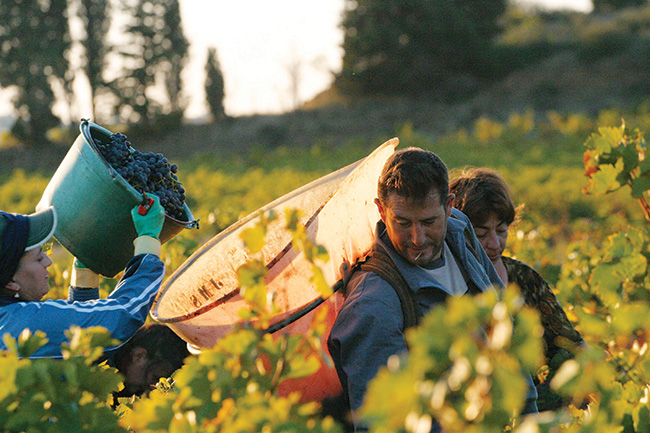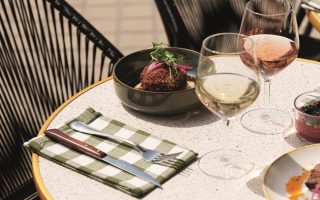12 Classic Pyrenean Foods and Drinks

The best produce, speciality dishes, and wines to look out for when visiting the region from foie gras to Bayonne chocolate. Note: This article is part of a bigger magazine feature called “Tracing the Pyrenees”.
Cassoulet
Ingredients vary depending on where you visit, but according to legend, cassoulet dates back to the 100 Years War when Castelnaudary was under siege by the English. The residents gave whatever food they had to the troops: bacon, pork, broad beans, sausages and other meats cooked in a big pot.
Boles de Picolat
This Catalan dish includes pork or beef meatballs, olives, carrots, garlic and cêpe mushrooms, all cooked in a deliciously rich sauce. Often served with haricot beans, it’s earthy Catalan fare at its finest. And again, the recipe, often handed down through the generations, varies from town to town.
Magret de Canard
It was André Daguin, chef and owner of the Hôtel de France in Auch, who first served magret de canard (duck breast) seared like a steak in 1959. Diners were initially so sceptical of his undercooked magret that he had to trick them into eating it by telling them it was red meat.

Cassoulet
Bayonne Ham
A sweet variety of specially cured ham from pigs whose rearing, slaughtering and drying processes are all strictly regulated. The result is a delicious, succulent ham, which is traditionally sliced very fine and normally served as a starter. It’s also great with some cheese and olives for a pique-nique.
Ardi Gasna
Ardi gasna means ‘sheep’s cheese’ in Basque. Hailing from the Nive valley in the Midi-Pyrénées, it is hard, with a crusty yellow rind, and it tastes deliciously rich and sweetly nutty. Perfect served with jam or chutney, and a great accompaniment to Bayonne ham.
Piment d’Espelette
Many Pays Basque dishes are flavoured with one of the region’s key spices known as piment d’Espelette, a chilli grown up in the hills in Espelette (Pyrénées- Atlantiques) and hung with pride on the front façades of the farmers’ houses. It is both hot and sweet at the same time.

Jurançon wine comes in both dry and sweet varieties
Bayonne Chocolate
It was Spanish and Portuguese Jews, fleeing the Inquisition who originally brought chocolate to Bayonne. Nowadays a whole industry has grown up around this culinary tradition. Nibble it, drink it, pour it on your gâteaux, and indulge yourself at breakfast, lunch or dinner. Miam!
Jurançon Wine
Produced near Pau, Jurançon wine comes in both dry and sweet varieties. A dry wind blows across the vineyards from the Pyrenees, ensuring the vineyards remain moisture-free, thereby enabling a long ripening season – perfect for late-harvest sweet wines.
Foie Gras
Foie gras is resolutely popular all over the southwest, despite a growing disapproval of its cruel production methods elsewhere in France and around the world. The old province of Béarn, in the Pyrénées-Atlantiques department, offers plenty of the luxurious liver delicacy.
Truffles
Périgord is just too far north to be included in our Pyrenean road trip, yet the culinary influence of the amazing world-famous truffles found there extends all over the southwest. Enjoy this gorgeous-tasting fungus with just about every dish you can think of, be it savoury or sweet.
Banyuls Grand Cru
“Good Banyuls is dark amber, intense, highly fragrant but fresh and clean and long in the mouth.” So says British oenologist Hugh Johnson of this great wine from France’s most southern vineyards, close to Collioure. Allow time for a tour of the vineyards and enjoy a dégustation.
Armagnac
Just north of our road trip itinerary, in the lower foothills of the Pyrenees, is the Armagnac region. Ténarèze and Bas-Armagnac yield the best-quality brandies, offering a velvety smooth, dry and pungent taste. Enjoy as a digestif following your meal, or even as an aperitif on ice.
From France Today magazine
Lead photo credit : Piment d’Espelette
Share to: Facebook Twitter LinkedIn Email
More in Pyrenean drinks, Pyrenean Food
Leave a reply
Your email address will not be published. Required fields are marked *



